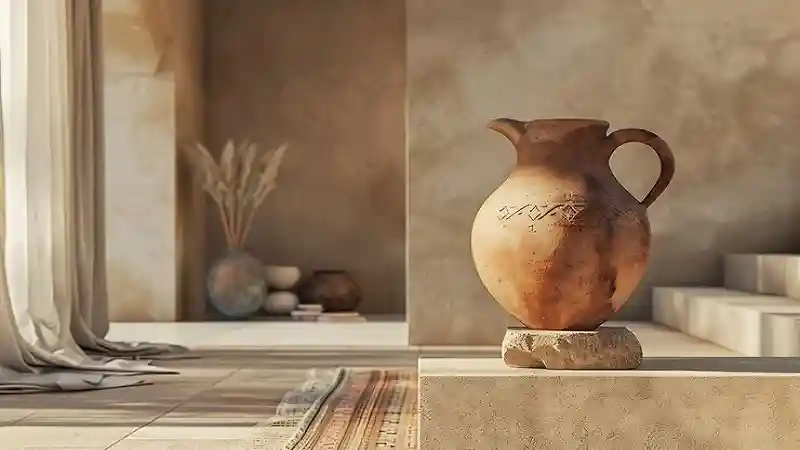How Advanced Ceramics Are Shaping The Future Of Air Conditioning
As industries evolve, the integration of cutting-edge materials and technology becomes a crucial aspect of enhancing performance and sustainability. Two fields that may seem worlds apart—advanced technical ceramics and HVAC—are increasingly finding common ground in their shared pursuit of efficiency, durability, and environmental responsibility. These innovations, particularly in air conditioning systems, are driving a transformation that promises both better performance and greener solutions.
Advanced ceramics have long been used across various industries, from aerospace to automotive, find more information at wunder-mold site. However, their application in the HVAC sector is particularly exciting as they offer unique properties that improve the longevity and energy efficiency of air conditioning units. Let’s dive into how these two industries are combining forces to shape the future of cooling systems.
Why Advanced Ceramics are Crucial to Modern HVAC Systems
Advanced technical ceramics possess properties that make them highly valuable in the development and enhancement of HVAC systems. Their strength, thermal resistance, and electrical insulation capabilities allow for a range of applications within air conditioning technology. These materials are commonly used in the manufacturing of key HVAC components, from sensors and heating elements to advanced thermal barriers.
One of the most significant benefits of using ceramics in HVAC systems is their ability to withstand extreme temperatures. This means that HVAC systems can operate more efficiently without degradation over time, improving their overall performance and extending the system’s lifespan. With Allied Experts, specialists in air conditioning installation, maintenance, and repair, these advanced materials are being utilized to ensure air conditioning units are built to last, even in the toughest environmental conditions.
Heat Resistance and Energy Efficiency
Advanced ceramics are known for their exceptional heat resistance, a key feature that makes them ideal for HVAC systems, particularly in high-demand environments. In traditional systems, materials tend to degrade when exposed to the constant heating and cooling cycles, leading to inefficiencies and eventual breakdowns. Ceramics, however, can maintain their structural integrity even at very high temperatures, making them a superior choice for components like heat exchangers and burners.
By reducing wear and tear, ceramic components contribute to improved energy efficiency in air conditioning systems. Systems that use ceramic materials can operate at higher efficiencies, consuming less energy to maintain the desired indoor climate. This reduction in energy consumption not only saves consumers money on their utility bills but also reduces the environmental impact of HVAC systems.
Advanced Ceramics in Space Exploration
Did you know that some of the same advanced ceramic materials used in air conditioning systems are also used in space exploration? These ceramics are critical for heat shields and other components on spacecraft, where they must endure extreme temperatures during re-entry into Earth’s atmosphere. The same properties that protect astronauts in space are helping make HVAC systems more efficient here on Earth.
Enhancing Durability and Reducing Maintenance
One of the primary reasons HVAC manufacturers are increasingly turning to advanced ceramics is the durability they offer. Traditional materials can corrode, erode, or degrade over time, particularly when exposed to moisture, chemicals, or fluctuating temperatures. Ceramics, on the other hand, are resistant to many of these common wear factors, making them a more reliable option for long-term use in HVAC systems.
The use of advanced ceramics reduces the need for frequent maintenance and replacement of components. For both residential and commercial users, this translates to lower costs and fewer disruptions, as the system remains in optimal working condition for longer periods. In a world where sustainability and cost efficiency are becoming ever more critical, the longevity provided by ceramic-based components is a significant advantage.
Applications of Ceramics in Air Conditioning Systems
The versatility of advanced ceramics allows them to be used in various parts of air conditioning units:
- Heat Exchangers: Ceramics in heat exchangers improve efficiency by providing superior thermal conductivity and resistance to high temperatures.
- Thermal Insulation: Ceramic materials are often used as thermal barriers, keeping the system’s temperature regulated and reducing heat loss.
- Sensors and Controls: Ceramics’ electrical insulation properties make them ideal for temperature sensors and other electronic controls used in HVAC systems.
- Burner Components: In systems that require combustion, ceramic materials are often used in burners due to their ability to withstand high temperatures without degrading.
The Ceramic Engine of Tomorrow
While ceramics are making a name for themselves in the HVAC industry, they are also the subject of intense research in automotive engineering. Engineers are developing ceramic engines, which could operate at much higher temperatures than metal engines, thus increasing efficiency. The lessons learned from these advancements in other industries are helping to shape future HVAC technologies as well.
The Future of Air Conditioning: Ceramics and Beyond
As both the HVAC and ceramics industries continue to evolve, we can expect even more innovative applications that improve system efficiency, sustainability, and durability. With rising global temperatures and increasing energy demands, air conditioning systems need to adapt to deliver high performance while reducing their environmental footprint.
Advanced ceramics are likely to play an even more significant role in the future of air conditioning as researchers and manufacturers explore new ways to incorporate these materials into system design. Whether through more efficient heat exchangers, enhanced durability, or better thermal regulation, ceramics are set to help revolutionize the HVAC industry.
A Promising Partnership
The intersection of advanced technical ceramics and HVAC systems represents a promising partnership in the world of modern technology. Both industries are working toward the same goal: creating systems that are more efficient, environmentally friendly, and long-lasting. As air conditioning systems continue to evolve, the integration of advanced ceramics will undoubtedly play a critical role in pushing the industry forward.
By embracing the benefits of advanced ceramics, HVAC manufacturers can continue to deliver innovative, high-performance systems that meet the demands of both consumers and the planet. The future of air conditioning is bright—and ceramic-infused!





